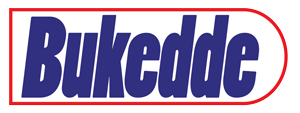Why govt is protecting the growing textiles industry
Apollo Mubiru
Journalist @New Vision
___________________
Uganda Revenue Authority (URA) has recovered over 150 rolls of textiles from a notorious smuggler in Busia. The fabric was recovered in a covert operation in the wee hours of Monday morning.
According to Moses Amwine, one of the officers involved in the operation, they received information that the habitual smuggler was planning to bring in textiles from neighboring Kenya.
“We assembled our equipment and lay in wait as the Harrier was being loaded, and indeed, at 5:00 AM, we managed to corner him at Mawero East Division headquarters, near Sofia border crossing, as he was planning to set off with his “cargo,” Amwine narrated.
Upon sighting the officers, the smuggler took off to the nearby bushes, leaving behind a Toyota Harrier UBQ 425. This was escorted to the Busia station where subsequent verification revealed 158 rolls of plain polyester textile materials and 51 pieces of poly-cotton plain dyed poplin textile material.
The team also recovered various number plates that they believe the smuggler had been using to beat surveillance while conducting his trade.
This interception comes at a time when traders have been up in arms over government’s policy to tax selected textiles in kilograms, that is, 3.5 USD per kg or 35% of the cost, insurance, and freight (CIF), whichever is higher.
While appearing on a local TV station recently, URA Commissioner General John Musinguzi explained that this policy was introduced to protect Uganda’s growing textile industry.
“It is a deliberate step by the government to promote this young sector with a lot of potential because if we add value to our cotton, we can easily be the leading producers of good cotton products as opposed to exporting the raw material,” he explained.
Musinguzi, however, acknowledged that since the implementation of the policy began, smuggling of textiles has been on the rise. He noted that URA is in talks with various stakeholders to address the challenges that come with it.
By sections 199(iii) and 200 of the East African Community Customs Management Act (EACCMA), the owner of the Toyota Harrier impounded in this operation is liable to a fine not exceeding USD 5,000.

No Comment